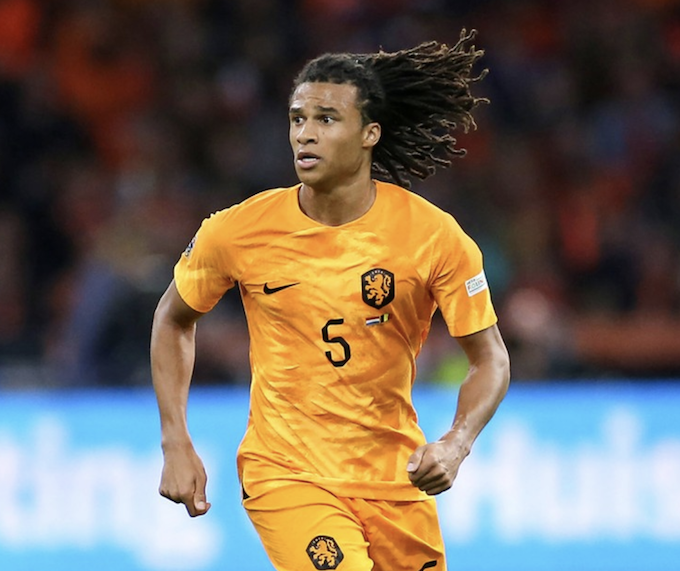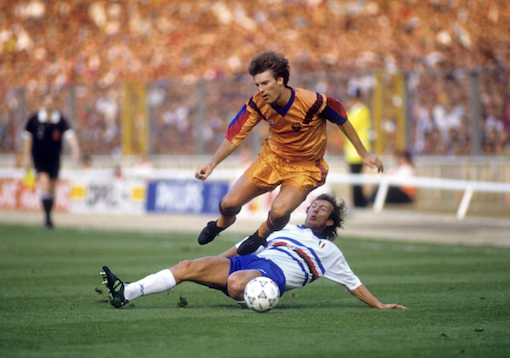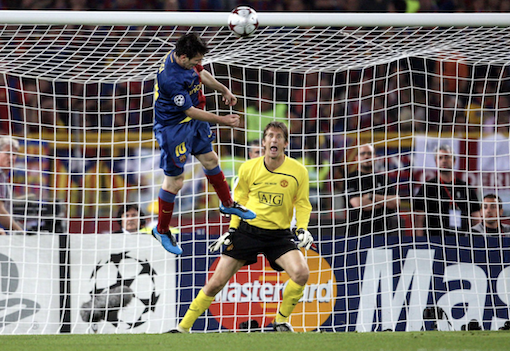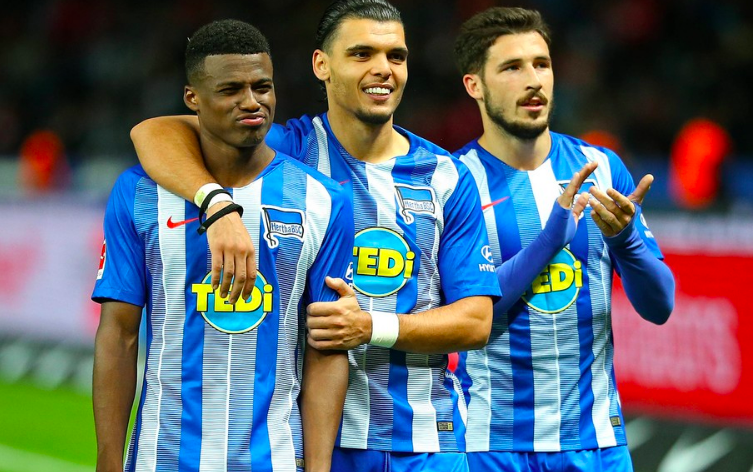He grabbed a starting berth in Oranje stealthily. He combines intelligence, experience, eagerness to learn and quality in one package. “He’s a special kid, and that he is.”
When Ake played at Bournemouth, his coach would play 5 defenders at the back when playing Man City. “In this way, we will limit the space for them to play in.” This is how Ake realised that playing for a big club like City (or Chelsea) brings a different dynamic. When he made his move to Man City, he realised he had to improve in finding solutions in less time and less space. Dutchman Piet Cremers worked at City as their peformance analyst for years and can confirm that Nathan was always trying to find ways to better understand the game and use this to develop himself. Whether it was thinking about football, working in the gym or using the video footage of games to understand the game better. Cremers confirms that Ake was one of the players most often harassing him for answers and insights. “He is the perfect professional, extreme in his drive to become better every day. It’s in his personality, I don’t think anyone pushed him to do this. He deserves all the credits for what he has achieved.”‘
Piet Cremers, former performance analyst Man City
Ake left for England as a youngster. The 15 year old captained the Oranje U17 team when he was picked by Chelsea. Living in London, he was to be part of the A-squad but his guest-family’s home wasn’t connected with the training complex in Cobham via public transportation. So young Nathan walked every day, on sandy country road and then along the highway, where one of his rich team mates would stop to allow Nathan a hitch in their expensive cars. On match days, Nathan could take the subway to Stamford Bridge. He’d sit among the Chelsea fans with his sports bag. “It was always good fun,” he’d later say.
Nathan is from Voorburg, a small town outside of Den Haag/The Hague. He was scouted by ADO Den Haan and after 4 years, Feyenoord came calling, where was in teams with Tonny Vilhena, Terence Kongolo and Karik Rekik. In 2021, Frank Arnesen – TD of Chelsea – called him and toured him around the Chelsea grounds. Ake was sold and after consulting his parents he decided to move to London. 16 years old.
Two years later, Ake made his debut in the Chelsea elite squad and Frank Lampard gives him the Talent of the Year award. He moves into his own apartment, with his brother Cedric. “My parents don’t allow us to get a help in, they want us to do all our home chores ourselves, and we will.”
When confronted with stories how most young talents fail to break into the first teams, he said: “I know, I heard all the stories. But I don’t want to see those stories as my reality. I want to be the guy who does succeed. I think the biggest pitfall for players making their debut, is to think they are there. They made it. But you haven’t made it, you are just beginning!”.
Skipper Ake with amongst others Tonny Vilhena and Karim Rekik
After a lone spell at Reading he was loaned out to Watford where he played his first real season as starter in the EPL. Jong Oranje coach Fred Grim started to scout him and was delighted with what he found: “At that age, Nathan was a man. Very mature and balanced and multi functional. He really understands the game. His best skills is his intelligence as a football player. I met his parents and understood how he got to be who he is. His parents are balanced, the family life there is grounded and harmonious. Nathan is a very modest and polite lad. The thing missing in his personality is the bastard. Some times in top football you need to be a bastard and think only about yourself and your goals. Nathan doen’t have this, a model pro and a top bloke.”
Grim also allowed Ake his debut in Oranje, when he took over from Danny Blind as interim coach: “We played against Morocco and that game had it all: physicality, fouls, and tough challenges, but Nathan didn’t care. He is not your typical defender, with his 180 cm height, but his tactical smarts, his intelligence and his football skills kept him on top, easily.”
After spells with Bournemouth and a short return to Chelsea, Pep Guardiola took a shine after Ake, partly due to the fact that the former Feyenoord captain is considered an English player. Life would be different. “At Bournemouth, he played in a 5 back line and the space was limited. They play compact, and backing up your team mate is a matter of two or three strides to the side. At Man City, the defensive space is huge. You play in big spaces and in isolated one-v-ones. When you step in at the wrong moment, it’s a 100% chance for the opponent. But on the ball, you don’t get time, most opponents will park the bus and play compact. What are your options. How quick are you feet and brain? These things, you can only find out by playing in those situations. Nathan made that switch super fast,” says performance coach Cremer.
Ake’s debut versus Morocco
Cremer goes on: “Nathan also has great ball skills. He can dribble and has the forward pass. He’s a great guy to work with as he is like a sponge, he wants to know everything. And eh…. he’s talented on many levels. He is also an amazingly accomplished piano player. This last season, his dad died and he married his childhood sweetheart, but all these events would not have any impact on the quality on the pitch.”
After a shaky start in Manchester, with some injury woes, Nathan now has a starting berth under Guardiola and plays his games regularly. Also in Oranje, the modest defender can count on a trip to Qatar as starter.
“I want a left footer on the left side of defence,” Van Gaal explained. Van Gaal thinks in terms of possession. When a defender needs to push high up on the pitch and ends up in midfield, he needs to use his best foot to open the game up and pass. A left footer is the natural type of player to do this swiftly. You need someone who is good on the ball, sees the game and has positional awareness. All things Ake has in spades. He’s also a very reliable defender of course.
When Ake moved to Man City, the criticasters were doubting him. Similarly. when the back three for Oranje was discussed, not a lot of people mentioned Ake. But he’s one of the few outfield players who managed to play consistently in the English Premier League. Him, Virgil van Dijk and now Pascal Struijk are the only ones that come to mind, amongst players like Klaassen, Van de Beek, Ziyech, Vincent Janssen, Berghuis and Bergwijn…
Ake after his 29th cap. “It’s going well, I am happy with the chances I get and the confidence the coach has in me. I need to keep this going, because the competition is intens. We have some top notch defenders now and everyone wants to start. The competition is good, it means you cannot snooze off.”
And yes, he has competition in Oranje and at City too. De Vrij, De Ligt, Blind, Struijk and Botman to name a few in Orange. And of course Ruben Dias and Laporte at City.
And developing yourself at a club like Manchester City is not that easy, says Cremers: “Don’t forget, City plays games every fourth day, so there are only 2 training sessions to develop and show yourself. The sub top teams in the EPL will have 4 to 5 sessions to work on becoming a better player. At City, you need to develop and show yourself in the games. That is pretty tough. And this makes Ake’s development even more impressive.”


















